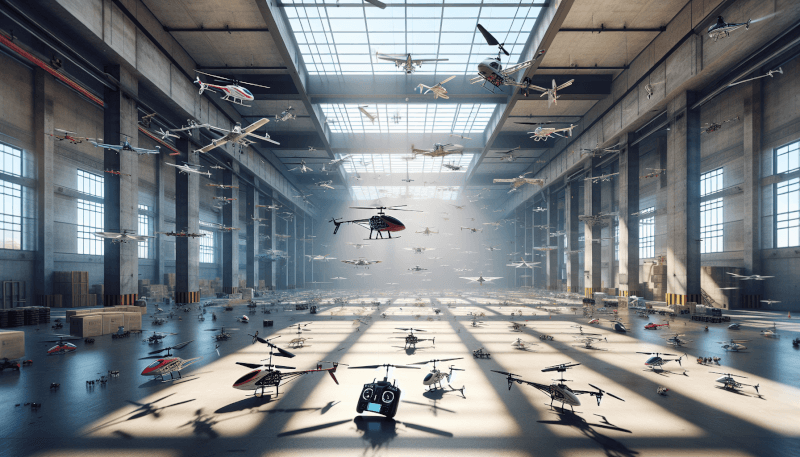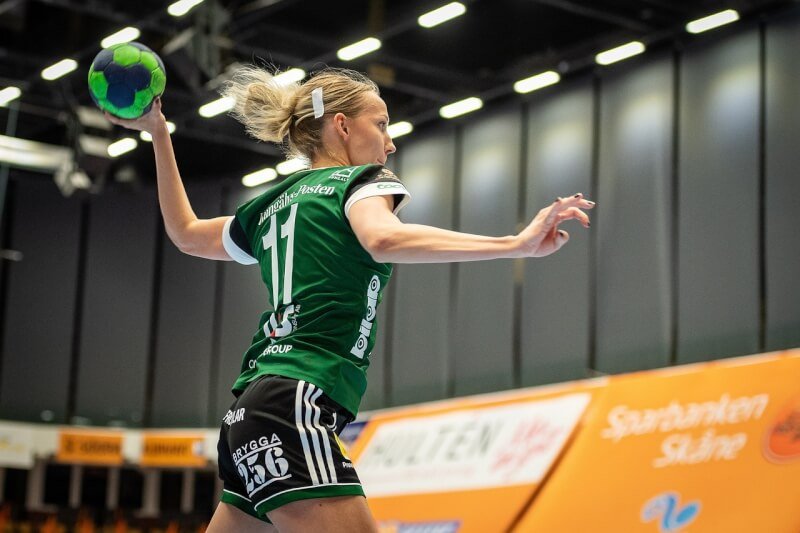Imagine the thrill of soaring through the virtual skies, maneuvering your very own RC helicopter or quadcopter with precision and finesse. But before you take off, you may be pondering a crucial question: Can I fly these magnificent machines indoors? Whether it’s the convenience of practicing your flying skills within the comfort of your living room or the desire to capture breathtaking aerial shots in confined spaces, this article will shed light on the possibilities and considerations of indoor RC flight. So, fasten your seatbelts and get ready to explore the exciting world of indoor flying!

Safety Considerations
When it comes to flying RC helicopters or quadcopters indoors, it’s important to consider safety first. There are two main areas of concern: the risk of injury and potential damages to property. By understanding and addressing these risks, you can enjoy indoor flying with peace of mind.
Risk of injury
Indoor flying carries a higher risk of injury compared to outdoor flying due to the confined space. It’s essential to keep yourself and others safe while operating RC helicopters or quadcopters indoors. Be aware of the rotating blades and maintain a safe distance from them at all times. Always wear protective goggles to protect your eyes from any potential accidents. Additionally, ensure that there are no people or pets in the immediate flight area to prevent any unwanted collisions.
Damages to property
Flying RC helicopters or quadcopters indoors poses a risk of damaging property. To minimize this risk, it’s crucial to choose a flying area with plenty of open space, away from fragile objects and valuable possessions. Clear the area of any potential obstacles, such as furniture, decorations, or delicate electronics, that could be accidentally knocked over or damaged during flight. Taking precautions will help prevent any unwanted mishaps and keep your surroundings safe.
Type of RC Helicopter or Quadcopter
When it comes to indoor flying, the size of your RC helicopter or quadcopter matters. Two common classifications to consider are micro-sized and mini-sized.
Micro-sized
Micro-sized RC helicopters and quadcopters are the smallest and most lightweight options available. They are perfect for indoor flying due to their compact size and maneuverability. These tiny machines can easily navigate through tight spaces, making them an excellent choice for indoor flights.
Mini-sized
Mini-sized RC helicopters or quadcopters are slightly larger than micro-sized ones but still suitable for indoor flying. They offer a good balance between stability and maneuverability, making them an ideal choice for both indoor and outdoor use. Their larger size also means they can handle slight breezes that may be present indoors.

Control and Stability
To ensure a smooth and enjoyable indoor flying experience, it’s important to consider the remote control features and flight stability of your RC helicopter or quadcopter.
Remote control features
RC helicopters and quadcopters come with various remote control features that can greatly enhance your flying experience. Look for models with precise and responsive controls, allowing you to maneuver the aircraft accurately. Some advanced controllers may even offer additional functions such as altitude hold, auto stabilization, and headless mode, which can make indoor flying easier and more enjoyable.
Flight stability
Flight stability is crucial when flying indoors since there is little room for error. Choose an RC helicopter or quadcopter that has built-in stability features, such as gyroscopic stabilization. These features help maintain control and balance, making it easier for beginners to fly and reducing the risk of crashes or accidents.
Indoor Environment
Flying indoors provides a unique environment with its own set of challenges and advantages. Understanding these factors will help you make the most of your indoor flying experience.
Limited space
One of the main challenges of indoor flying is the limited space available. Unlike outdoor flying, you won’t have vast open skies to explore. Therefore, it’s important to choose an RC helicopter or quadcopter that is well-suited for compact spaces. Micro-sized or mini-sized models are recommended as they can easily maneuver within limited areas.
Lack of wind
Indoor flying removes the unpredictability of wind, which can be advantageous for beginners or those looking for a controlled flight environment. With no gusty winds to contend with, you’ll have better control over your RC helicopter or quadcopter. However, keep in mind that air currents generated by air conditioning or fans can still affect the flight. Be aware of these factors and adjust your flying techniques accordingly.

Flying Skills
Before flying your RC helicopter or quadcopter indoors, it’s important to consider your flying skills and choose a model that suits your experience level.
Beginner level
If you’re new to flying RC helicopters or quadcopters, it’s recommended to start with a model designed for beginners. These models often feature simplified controls and stability features to help you learn the basics of flying. With practice, you’ll gain confidence and become more comfortable operating your aircraft indoors.
Intermediate level
Once you’ve mastered the basics of indoor flying, you can upgrade to a model designed for intermediate flyers. These models often offer more advanced features and greater maneuverability, allowing you to perform tricks and more complex flight patterns. However, it’s important to continue practicing in a safe and controlled environment to refine your skills.
Advanced level
For experienced pilots looking for a thrilling indoor flying experience, advanced-level RC helicopters or quadcopters are available. These models often incorporate cutting-edge technology, powerful motors, and enhanced stability features. They allow for more aggressive maneuvers and can provide an exhilarating flight experience. However, these advanced models require a high level of skill and experience to operate safely.
Noise Level
The noise generated by RC helicopters or quadcopters can be a consideration when flying indoors, especially in residential areas. It’s important to be mindful of the potential disturbance caused to others, including your neighbors.
Disturbance to others
RC helicopters and quadcopters can produce a significant amount of noise, especially when operated at higher speeds or with larger models. Consider the noise level of your aircraft and choose a model that has noise-mitigating features, such as quieter motors or propellers. This will help minimize disruption to others and allow you to enjoy your indoor flying without negatively impacting those around you.
Neighbors’ considerations
If you live in an apartment building or in close proximity to neighbors, it’s important to be considerate of their comfort. Before flying indoors, inform your neighbors about your hobby and ensure that they are comfortable with the potential noise levels. Set specific times for indoor flying to avoid disturbing them during quiet hours. By maintaining good communication and being mindful of their concerns, you can foster positive relationships and enjoy your indoor flying without any conflicts.

Battery Life and Charging
Battery life and charging considerations are essential when it comes to indoor flying. Understanding the limitations and requirements of your RC helicopter or quadcopter will help you plan your flying sessions effectively.
Limited flight time
Most RC helicopters and quadcopters have limited flight times due to their small battery capacities. Indoor flying sessions may be shorter than outdoor ones, depending on the model. It’s crucial to monitor your battery levels and plan accordingly to ensure that you have enough power to safely land your aircraft. Consider purchasing extra batteries to extend your flying time indoors.
Charging requirements
To ensure uninterrupted indoor flying, it’s important to have a reliable and efficient charging setup for your RC helicopter or quadcopter’s batteries. Make sure to follow the manufacturer’s guidelines and use the recommended charging equipment. Allocate sufficient time for charging before each flying session to avoid any interruptions or disappointments. Charging multiple batteries simultaneously or investing in a fast-charging option can help minimize downtime and maximize your indoor flying experience.
Legal Restrictions
Before engaging in indoor flying with your RC helicopter or quadcopter, it’s crucial to familiarize yourself with the local laws and regulations regarding recreational drone use.
Local laws and regulations
Different countries and regions have their own specific laws and regulations governing RC aircraft, including indoor flying. These regulations may include restrictions on flight height, proximity to people or buildings, and privacy considerations. Familiarize yourself with the applicable laws in your area and ensure compliance to avoid any legal consequences. Stay updated on any changes or updates to the regulations to ensure safe and legal indoor flying.
Flying in restricted areas
Some indoor locations, such as airports, government buildings, or public events venues, may have specific restrictions or regulations regarding the use of RC helicopters or quadcopters. Always check with the facility manager or relevant authorities before flying indoors to ensure you are not violating any regulations or compromising public safety. Respect any “no-fly” zones or restricted areas to maintain a positive image for the RC flying community.
Choosing the Right Location
Selecting an appropriate indoor flying location is crucial for a safe and enjoyable experience. Consider the following factors when choosing where to fly your RC helicopter or quadcopter indoors.
Open indoor spaces
Look for locations with ample open space to fly your RC helicopter or quadcopter indoors. Large rooms, such as living rooms, basements, or gymnasiums, can provide enough airspace to maneuver without the risk of collisions or damage to property. Avoid flying in areas with cramped spaces or cluttered layouts, as this increases the chances of accidents or collisions.
Indoor flying clubs or arenas
Indoor flying clubs or arenas are dedicated spaces designed specifically for RC aircraft enthusiasts. These venues provide controlled and safe environments for indoor flying. They often have designated flight areas, safety guidelines, and experienced pilots who can offer guidance and support. Joining a local indoor flying club or visiting an indoor flying arena can enhance your flying experience and connect you with like-minded enthusiasts.
Preparing the Indoor Flying Area
To ensure a safe and accident-free indoor flying experience, it’s essential to properly prepare the flight area. Taking precautions and addressing potential risks will help protect your property and prevent any unwanted accidents.
Clear obstacles and fragile objects
Before starting your indoor flying session, clear the flight area of any potential obstacles or fragile objects. Remove furniture, decorations, or any other items that can obstruct your flight path or be easily damaged. Clearing the area will minimize the risk of collisions or accidental damage to valuable possessions.
Use protective flooring
To further protect your property and minimize any potential damage during flights, consider using protective flooring in the indoor flying area. Foam mats, carpets, or rubberized flooring can act as a cushioning layer, reducing the impact force in the event of a crash or hard-landing. This extra level of protection can help absorb any shocks and prevent damage to your RC helicopter or quadcopter and the surrounding area.
In conclusion, indoor flying of RC helicopters or quadcopters comes with its own set of considerations and preparations. By understanding and addressing safety concerns, choosing the right model, being mindful of noise levels and legal restrictions, and preparing the flying area properly, you can enjoy the thrill and excitement of flying indoors. Remember to always prioritize safety, respect the privacy and comfort of others, and comply with local regulations to ensure a pleasant and responsible indoor flying experience.


